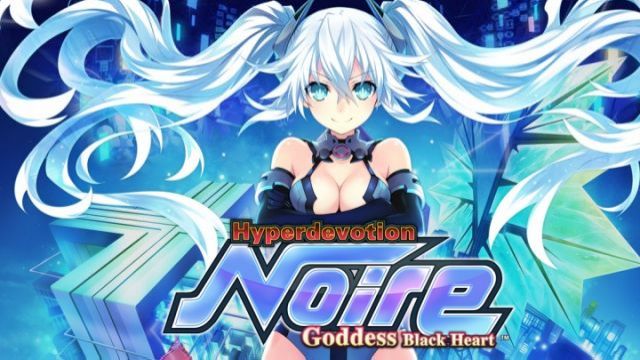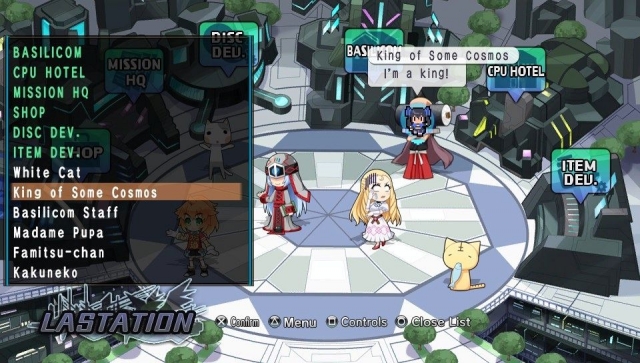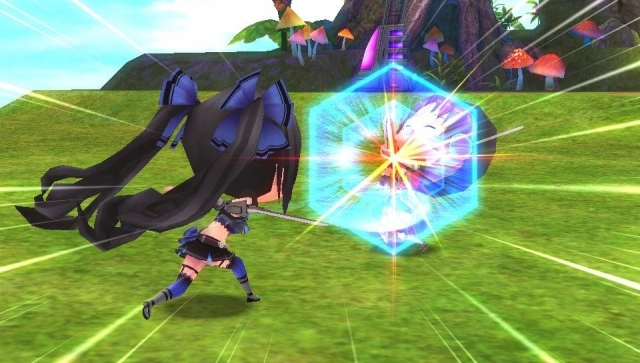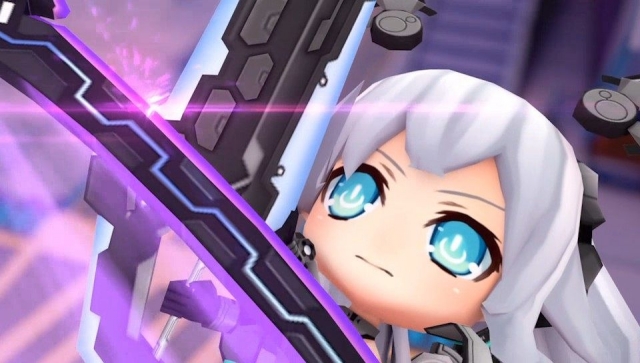Hyperdevotion Noire: Goddess Black Heart

The Hyperdimension Neptunia games have gained a reputation for being some of the finest RPGs on the Vita. Given how RPG-heavy the platform is, that isn’t faint praise. The fourth wall-leaning series relies on gaming’s history both from the distant past and modern history to tell a story about territorial warfare. Much like how the console wars have raged off and on for decades, so to does the war between the pseudo-Sega, pseudo-Nintendo, pseudo-Xbox, and pseudo-Sony factions. Each is led by a leader known as a CPU, although here, things are turned into more of an alternate dimension kind of thing with this being a side story.
The game begins with Noire dominating the CPUs seen in the past games, but she’s duped by Eno – a pale white witch who looks like pure evil. Like the other games in the series, the writing is pretty funny, but the extended dialogue scenes can be hit or miss. Sometimes, they go on too long and they seem to outnumber battle scenes fairly frequently. Luckily, the battle setup is worth sticking around for even if the plot doesn’t do much for you.
There’s a little hub world that introduces you to the other characters you’ll come to fight and then play as. These characters include homages to Chun-Li, Famitsu, the King of All Cosmos from Katamari Damacy, and even a female expy of a box-clad Solid Snake. Throughout the Gamarket, you can shop for items, weapons, or forge new weapons and CDs for buffs. You can also listen to music, view galleries, and check out any previously-view cutscenes. After battles, you can also listen to requests of your in-game fanbase to outfit the house that your CPUs live in. Sim Noire is a small diversion from the main game, but it does give you something new to do and diversifies the gameplay a bit.
The core mechanics are about the same as any other SRPG on a surface level. Pre-fight screens give you information about the battlefield and you can re-equip your roster after choosing which of the dozens of possible characters to play as in battle. Each character can be customized with a variety of items and affinity crystals to better fit their archetype. If you’ve got a character that is more of a healer, then you’ll want to make a disc that gives them some buffs so they’re resistant to certain types of damage.
Multiple partner attacks are possible thanks to the Lily system. Friendly units that have an affinity for each other can crowd around an enemy, kiss each other, and do massive damage. You can boost affinity by doing special moves or skill-based attacks while surrounding foes. BFF status can be a real deal-breaker for enemies, so you’ll want to be mindful of which pairings you’ve got either at that level or close to it before your pre-fight loadout. LP points are a lot like what MP would be in a Final Fantasy game, and it can be replenished with items in shops or sometimes on the field with healing zones.
Difficulty balancing in SPRGs has always been tricky. Ogre Battle and Final Fantasy Tactics were noted for being fairly ruthless (although I did kick ass at FFT on the PS1 thanks to its guide, so it wasn’t insurmountable). Disgaea, like the Hyperdimension games, is really funny, but also incredibly tough. Hyperdevotion strikes a fine line between comedy and crafting a game that scales for the player. LP also sets up HDD mode for the CPUs. With this activated, the major characters can soar above the battlefield for a tactical advantage and open up treasure chests or just reach an ally a bit faster for a save if they’re getting beaten down. If you need to grind, you can always go through the simulation versions of story missions after completing the regular version. This enables you to not only level up your characters, but grab some treasure if you missed out on it the first time due to just wanting to focus on the core objective of winning the battle.
One of the best parts of Hyperdevotion is the unique map structure. A lot of SRPGs go with terrain-based combat, but they don’t make it visually-interesting. That isn’t the same here. Your first glimpse of that is with a wrestling ring-themed stage that features an electrified center area as well as electrified ropes. The end result is something where bounce back can mean the difference between winning and losing. Being on the receiving end of a shot into the electrified portions will do a ton of damage to you, but properly making use of attacks can send foes sailing into it. Later on, things get sillier with things like trains and even a soccer field as playable areas.
Visually, Hyperdevotion Noire looks about on par with past games. It’s a little more drab with some of the environments and the character models and environments each could stand to have a bit more detail. However, the battles are filled with special effect-laden special attacks and those never lead to a bit of slowdown. That reminds me, if you feel like the battle animations themselves are a bit too elaborate or need to shave time off of a play session, you can do that by pressing X at any time. It will immediately jump through a character’s actions and then move on to the next person’s. This is a great way to get a lot done with only an hour to spare. Aside from some rough edges, this is an eye-pleasing game that would benefit from a ramped-up polygon count, but is still nice to look at in its current form as well.
Hyperdevotion is a great game to listen to because its soundtrack is so varied and the voice work is so good. A lot of veteran voice over talent, like Wendee Lee, is used here and they continue the great jobs done before with the Hyperdimension games. The tone of the dialogue is largely tongue-in-cheek and that works for a giant love letter to the gaming industry. The wide variety of parodies for gaming franchises results in a soundtrack that shifts from silly to serious depending on the chapter you’re in, and is always really good. Since this game is one of the few of the modern era with a jukebox setup in it, you can listen to stuff whenever you want and gain an even greater appreciation for it with headphones – which really do bring out the sounds of combat nicely.
Hyperdevotion Noire is a must for anyone who loved the prior Hyperdimension games. It shifts the focus to strategy RPG gameplay and does so perfectly, while retaining all of the franchise’s humor in the process. If you’ve never played the series, and dig SRPGs, this works fine as a starting point since it’s a side game that gets you used to the franchise’s sense of humor. If you aren’t a big SRPG fan, I’d still recommend it since it’s the most user-friendly SRPG you’ll find. The difficulty can always be adjusted, and can be made even easier after a loss. It’s a top-notch game and one that furthers the Vita’s library of exclusives, while also making the PlayStation TV a good buy since it’s compatible with that device as well and SRPGs are generally a bit easier to play on a larger screen.
Reviewed By: Jeremy Peeples
Publisher: Idea Factory International
Rating: 95%
——————————————————————————–
This review is based on a digital copy of Hyperdevotion Noire: Goddess Black Heart for the PlayStation Vita provided by Idea Factory.
 Game Over Online
Game Over Online
















